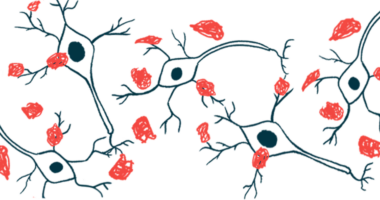Restoring energy supply may protect brain cells in Parkinson’s
PGK1 enzyme found to make 'big difference' in disease in new mouse study

Restoring the energy supply of nerve cells in the brain by activating a gene called PGK1 — which encodes an enzyme of the same name — could help protect these cells from damage and thus prevent Parkinson’s disease from developing or progressing over time, according to a new study in mice.
“Our findings show that PGK1 can really make a big difference in Parkinson’s disease, in ways we didn’t anticipate,” Timothy A. Ryan, PhD, a professor at Weill Cornell Medicine in New York, who led the study, said in a university press release. “I’m very optimistic that this line of research has the potential to generate new Parkinson’s treatments.”
These findings provide a rationale for repurposing medications that activate PGK1 — such as terazosin, which is approved in the U.S. under the brand name Hytrin to treat an enlarged prostate — or develop new treatments to halt or slow down Parkinson’s.
While terazosin has shown benefits in animal models of Parkinson’s, its ability to activate PGK1 is quite weak. For Ryan, “it is exciting to consider the possible clinical impact of new drugs that, compared with terazosin, can enhance PGK1 activity more potently and selectively.”
The study, “Phosphoglycerate kinase is a central leverage point in Parkinson’s disease-driven neuronal metabolic deficits,” was published in the journal Science Advances.
Energy supply problems now thought to be behind nerve cell loss
Motor symptoms of Parkinson’s are caused by the loss of dopaminergic neurons, the nerve cells that produce dopamine, a chemical involved in motor control. Increasing evidence suggests that problems with mitochondria, cells’ energy centers, may be behind the loss of dopaminergic neurons.
Researchers now looked at a gene called PGK1, found in a region of DNA associated with genetic susceptibility to Parkinson’s. The protein it encodes, PGK1, is an enzyme important for glycolysis, a series of reactions that allow cells to produce small amounts of energy in the absence of oxygen.
The team found that increasing PGK1 activity in lab-grown neurons, even by a small degree, increased the production of ATP, the main source of energy for cells. This increase in ATP was enough to strengthen synapses — the connections between neurons that allow them to communicate — in neurons carrying mutations linked to Parkinson’s.
The protective effect of PGK1 appears to depend on DJ-1, also known as PARK7, a chaperone protein that helps other proteins fold into their correct shape. When DJ-1 is missing, the energy balance in neurons is disrupted, particularly within axons, the long neuronal projections that carry electrical signals from one neuron to another.
In this study, the researchers showed that both PGK1 and DJ-1 are essential for maintaining energy in neurons.
“There is a functional partnership between DJ-1 and PGK1, whereby DJ-1 directly modulates PGK1 activity,” the researchers wrote.
These results establish PGK1 as a crucial leverage point in synaptic function and [Parkinson’s]-related dysfunction. … Therefore, the mechanisms that control PGK1 abundance, activity, and localization … are of significant therapeutic potential.
The team also tested whether activating PGK1 could protect neurons in living organisms. By using a virus to deliver more PGK1 to the brains of mice, they found that it protected dopamine-producing neurons from damage caused by energy stress.
“These results establish PGK1 as a crucial leverage point in synaptic function and [Parkinson’s]-related dysfunction,” the researchers concluded. “Therefore, the mechanisms that control PGK1 abundance, activity, and localization, which are not well understood, are of significant therapeutic potential.”
According to the release, this work shows that the PGK1 enzyme “has an unexpectedly critical role in the production of chemical energy in brain cells,” and “boosting its activity may help the brain resist the energy deficits that can lead to Parkinson’s disease.”







